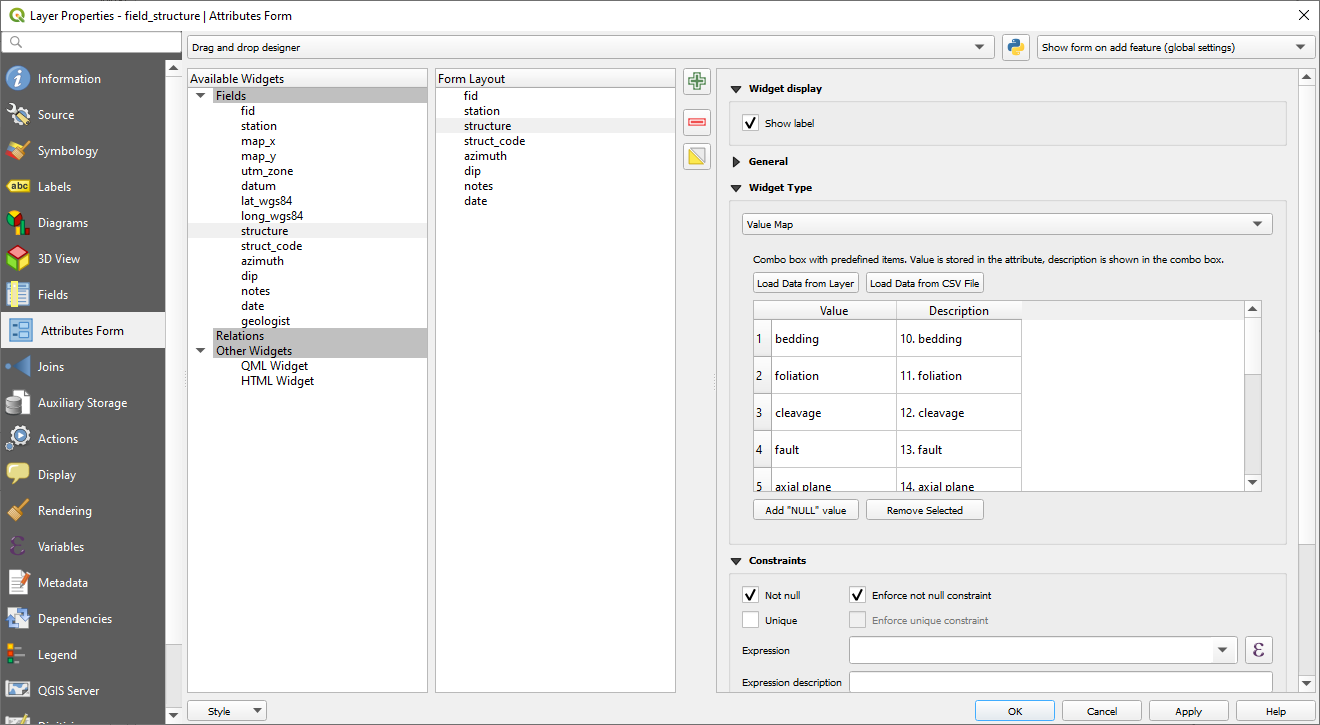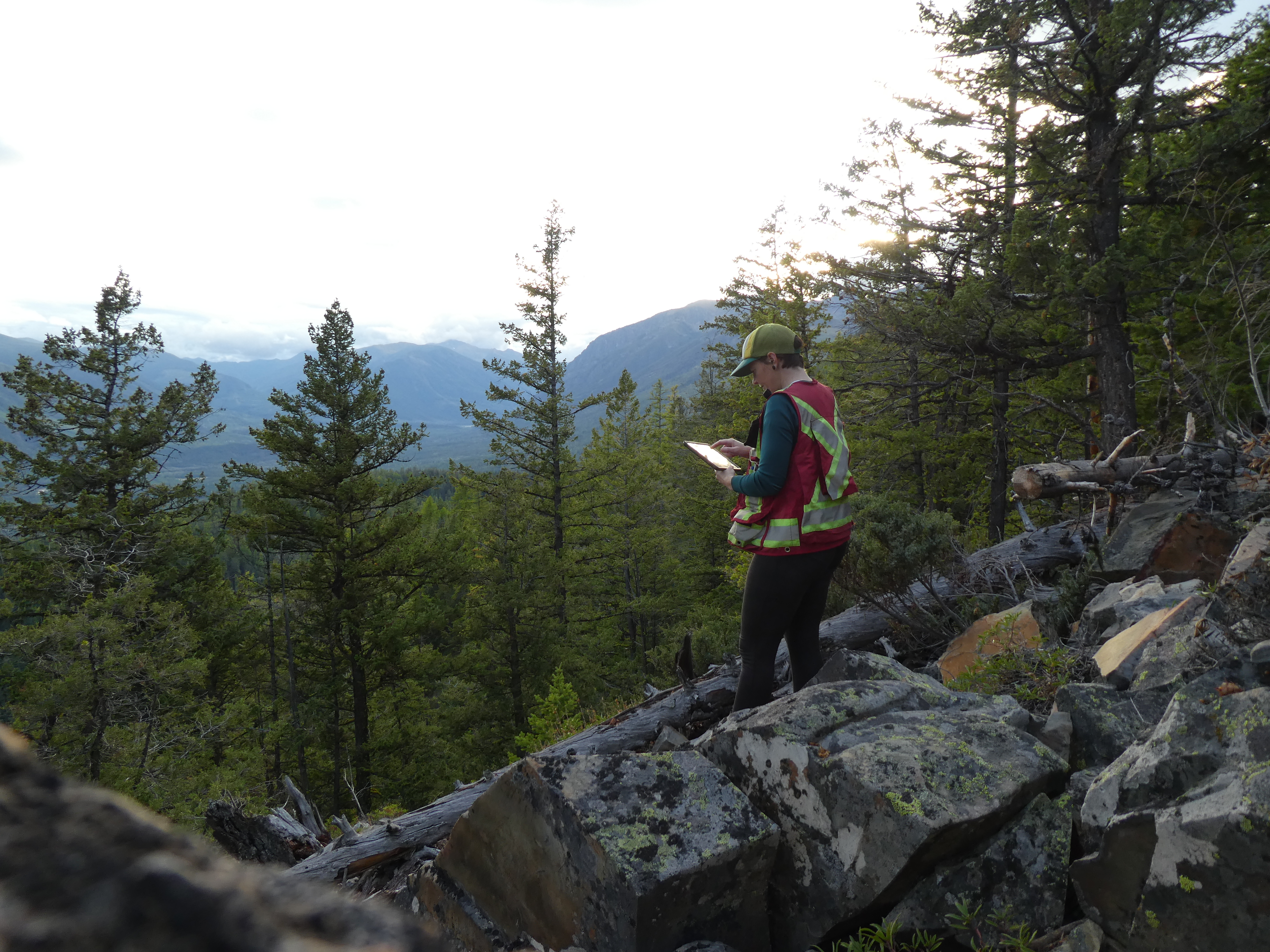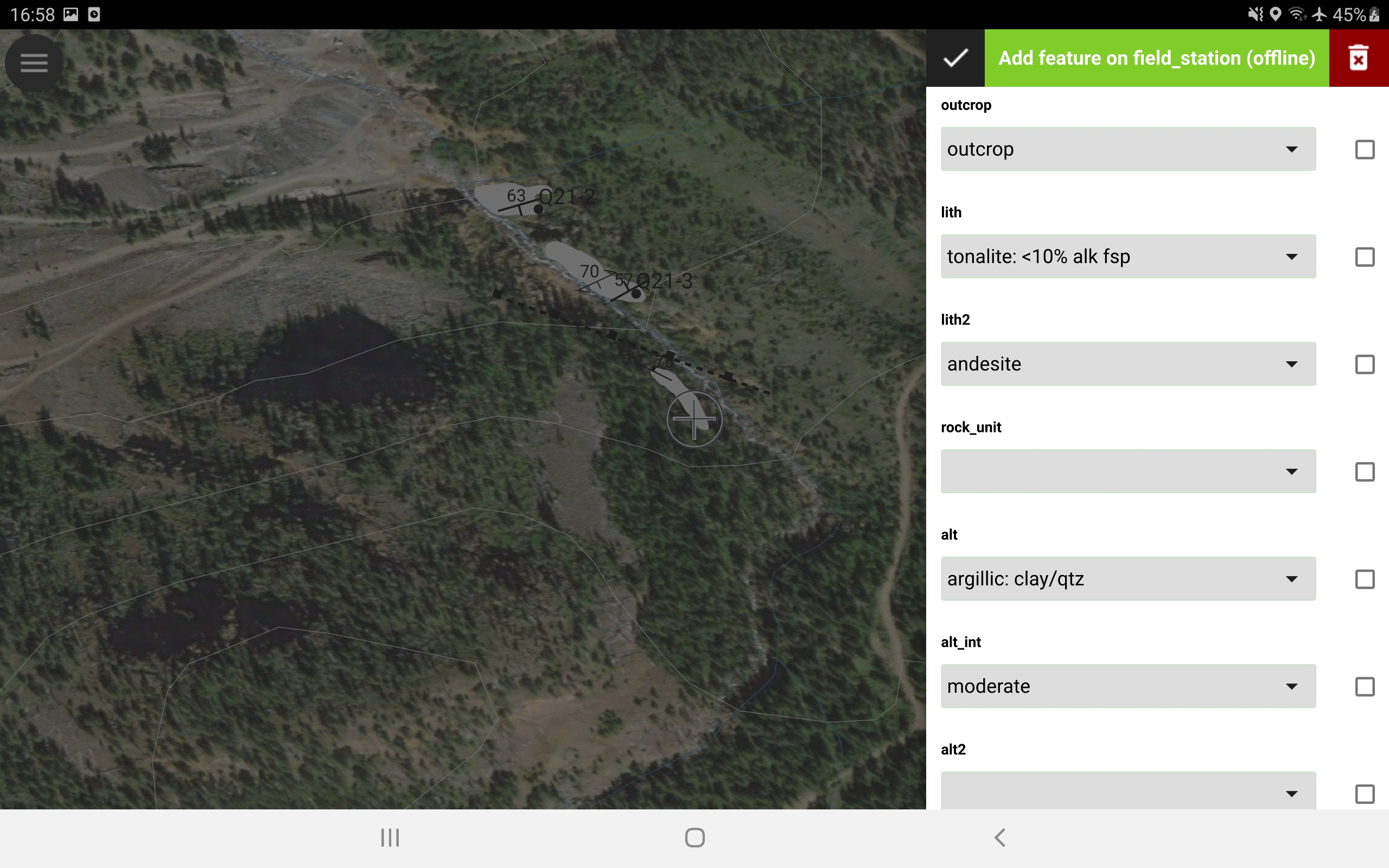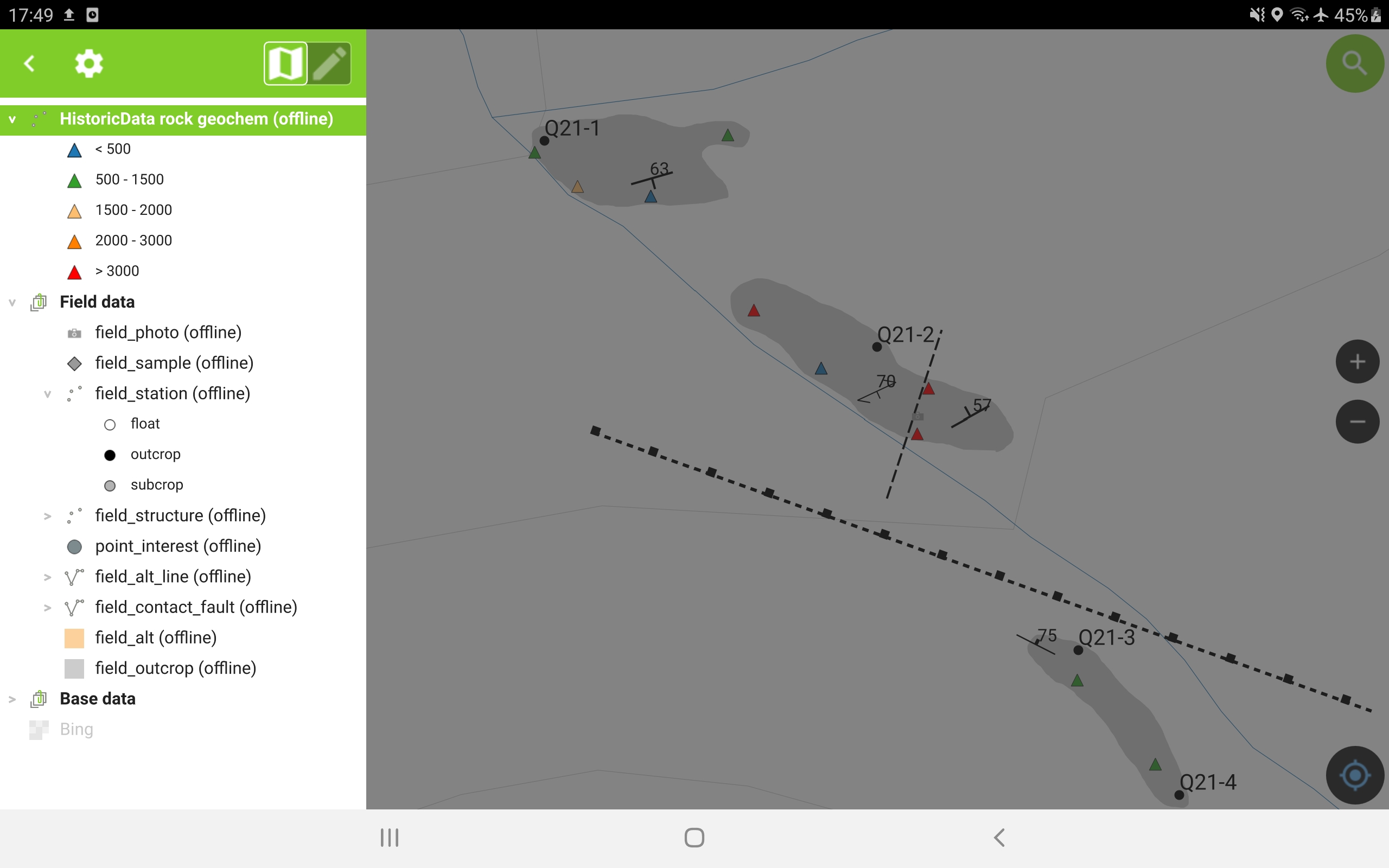Geologische Kartierung mit QField¶
von Rohanna Gibson, Strukturgeologin, Terrane Geoscience
Zielsetzung¶
Um neue Daten zur Geologie des Grundgesteins zu sammeln und vorhandene geowissenschaftliche Daten im Feld anzuzeigen. Die geologische Kartierung wird mit Hilfe von Papierkarten durchgeführt und/oder digitalen Geräten zur Datenerfassung. Ziel ist es, den geologischen Kartier-Workflow durch Eingabe von Daten direkt im Feld zu verbessern, Qualitäts-Daten mit konsistenten Ausdrücken zu erstellen und vorhandene geowissenschaftliche Daten im Feld zu referenzieren.
Projektvorbereitung¶
Prior to starting in QField, a geologic mapping GeoPackage was designed to collect vector data including point station, structure, photo, and sample layers as well as line and polygon layers for contacts, faults, alteration, and geology. Attribute fields are customized for ease of data entry and data quality assurance using value maps, defaults (value or expression), and constraints within the Attributes Form. For example, the structural layer includes:
Koordinaten
Fields with default value x and y coordinates from GPS data.
Strukturtyp
Value map (drop down list) with structural features (e.g., bedding, cleavage, lineation), set with a "not null" constraint.
Azimut und Neigung
Integers with range set from 0-360 and 0-90, respectively.
Datum
Voreingestellter Datums- und Zeitwert bei Erstellung des Merkmales
Symbolisierung und Beschriftungen werden für jeden Layer angepasst, einschließlich eingebetteter SVG-Symbole für Strukturmerkmale, die gemäß dem Azimut-Feld gedreht werden.
In addition to field data, base maps and historic data are compiled into GeoPackage for reference. Base maps include vector topographic data and raster orthophotos. Raster geophysical data and vector geochemical data are included if available, as well as historic geologic mapping. Map themes are designed to quickly toggle between geologic mapping, geophysics, and geochemistry views.
Datenerhebung¶
Field data collection includes adding point data for map stations, structures, photos, and samples. Polygons and lines are drawn freehand with a stylus or adding vertices manually.
Location and direction of travel are displayed using internal device GPS (or external GPS device linked via Bluetooth), historic vector and raster layers can be viewed relative to location. Current and historic vector layers can be searched and viewed in QField.
Field data are synchronized in QGIS followed by a short data clean up and verification process. The QGIS project is then exported back to QField for additional data collection.
Structural data collection may be upgraded with future development of a geologic compass feature. https://github.com/opengisch/QField/issues/1882
Ergebnisse¶
Final geologic maps and analysis are prepared directly from field data sets with no need to digitize field data. Depending on proficiency and type of mapping, the QField geologic mapping workflow takes approximately the same amount of field time as manual (paper) mapping and drastically reduces office data digitization time. Additionally, historic data are easily referred to in the field, allowing for real time interpretation and targeted field work. Maps and attribute tables can be exported directly from QField or the QGIS project for daily field updates or communication between working groups.
QField allows for data integrity with customizable attribute fields and database compatibility. Field data quality assurance can be built in during project design, ensuring attributes are consistent between users and reducing human error with constraints and default values.



